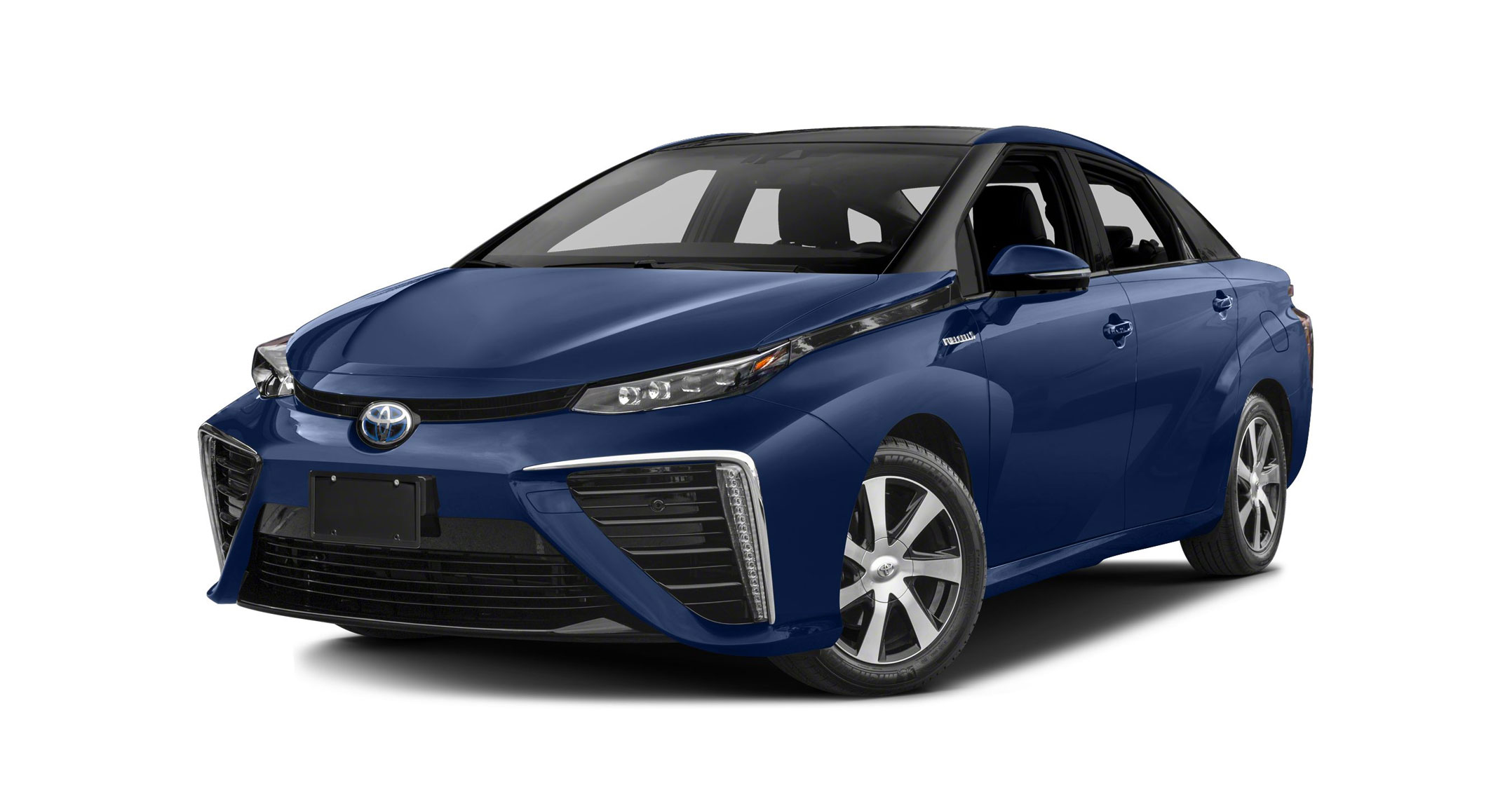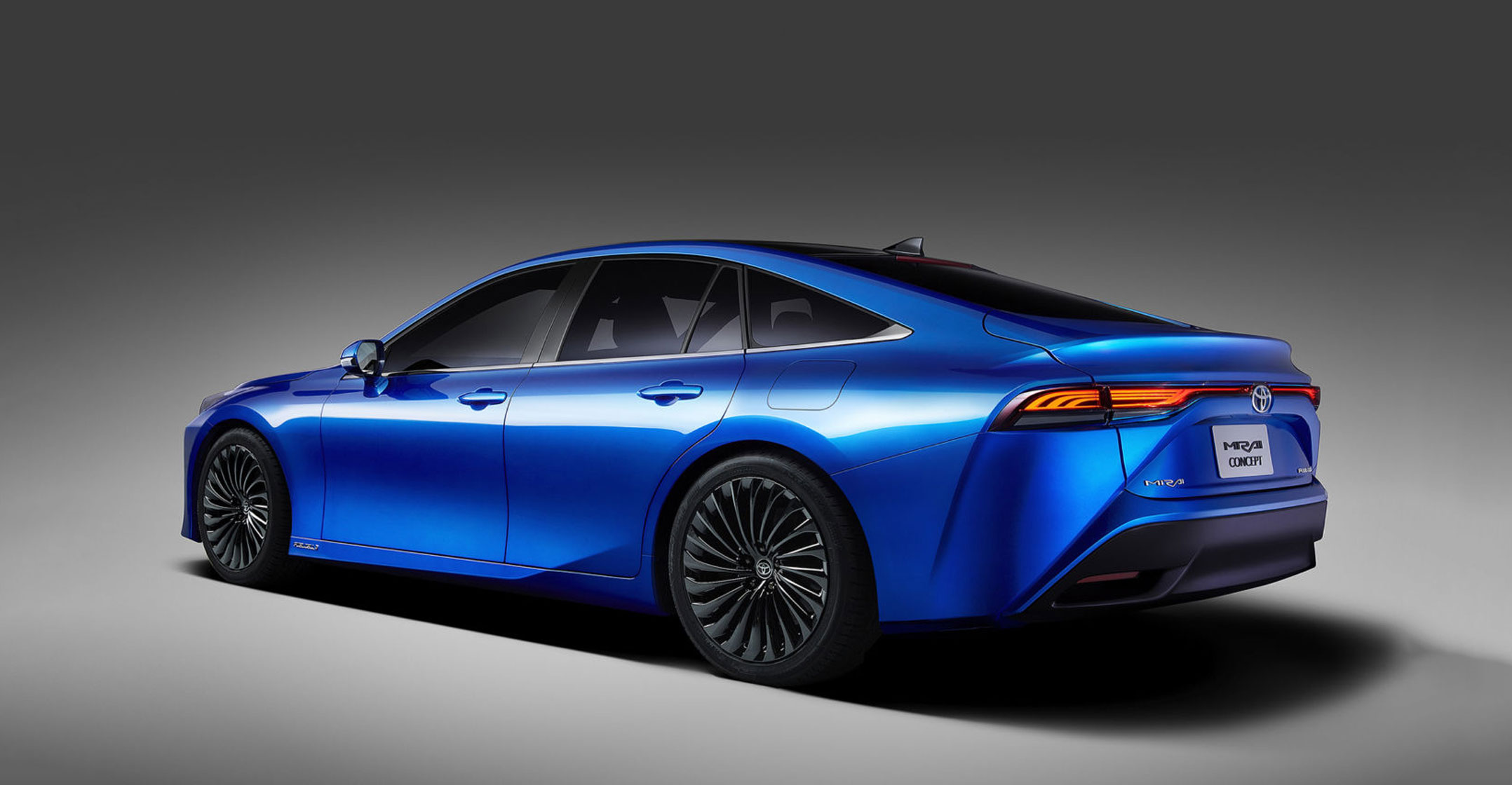
As other automakers plan battery-powered SUVs and trucks, Toyota’s vision for the future of driving remains a hydrogen-sipping sedan.
The Japanese behemoth will begin sales late next year of the second-generation Mirai, its fuel cell-powered four-door, and ramp up annual production by 10-fold from the current model. Toyota’s bet that it can position a hydrogen sedan for more of a mass market flies in the face of rivals wagering on putting batteries into the bigger-bodied vehicles consumers are buying.
Toyota has been slower than peers to embrace EVs, citing uncertain demand in key markets including the US and technical hurdles that limit battery range and recharging times. While the company has pledged to offer an electrified version of every model in the next five years, and 10 fully electric vehicles by early the next decade, it’s also going to keep coaxing consumers to give hydrogen a try.
“Toyota won’t be putting all our eggs in one technology basket,” Doug Murtha, Toyota’s US group vice president for corporate strategy and planning, said at a briefing in Greensboro, North Carolina.
Toyota’s near-term electrification goals in the US centre on its petrol-electric hybrid powertrains. It currently sells six hybrid vehicles and said on Thursday it will add a plug-in hybrid version of its RAV4 crossover next year.
The company plans to increase sales of hybrid cars and SUVs in the US to 25% of deliveries by 2025, up from about 9% today.
Costs halved
Toyota began developing hydrogen-powered cars more than 20 years ago, but progress has been slow due to high materials costs and steep hurdles to setting up refuelling infrastructure. Recent technological advances halved the cost of fuel cell stacks that mix hydrogen and oxygen to produce electricity, allowing the car maker to boost global output from 3 000 a year in 2018 to 30 000 next year and 200 000 by 2025, Taiyo Kawai, GM of the company’s hydrogen efforts, told reporters during a briefing in London.
Rival automakers such as General Motors in the US and BMW in Europe have invested in fuel cell technology but are prioritising EVs in their current and future zero-emission products. In the US, only Toyota, Honda and Hyundai sell fuel cell-powered passenger cars — and only at a handful of dealers due to the scarcity of hydrogen stations.
Fuel cell vehicles offer several advantages over battery-powered cars, including quicker refuelling times and longer driving ranges. But they remain a novelty, accounting for less than 0.1% of the nearly 100 million vehicles produced each year, according to research by the National Academy of Sciences.

“Unfortunately, despite years of education efforts, hydrogen cars are still a mystery to most people,” said Jackie Birdsall, a senior engineer at Toyota’s R&D centre in Gardena, California. “The good news is that fuel cell technology is gaining momentum around the world,” she said.
Improvements have been made to shrink the size of hydrogen fuel tanks and reduce the amount of costly platinum needed for fuel cell stacks. But there’s still more to do, including replacing platinum with cheaper synthetic materials, said Shawn Litster, a mechanical engineering professor at Carnegie Mellon University.
Toyota, which loses money on the current Mirai, hasn’t said when it plans to break even with a future version. The company showed a near production-ready model to reporters this week in Greensboro, but wouldn’t say when the car will make its official public debut.
The first Mirai — which means “future” in Japanese — debuted in late 2014, but availability in the US has been limited to California and Hawaii. California has spent about US$100-million over the past several years to build out a network of hydrogen stations. The state currently lists just 38 retail locations that are operational; another 22 are in various stages of development.
The first-generation car’s oddball looks, $58 500 sticker price and cramped interior made it a hard sell for dealers.
The new version of the Mirai is sleeker and more coupe-like, with a lower, longer and wider stance. It has room inside for five passengers, one more than the current model, and sports racier 20-inch wheels.
Toyota says the Mirai will make a 30% leap from the existing model’s 500km range. Pricing won’t be announced until later, but it will be sold as a premium vehicle under the Toyota brand. — Reported by Chester Dawson, with assistance from Siddharth Philip, (c) 2019 Bloomberg LP

